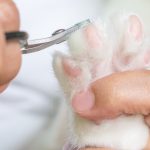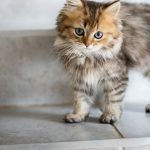Table of Contents
When your cat begins the rhythmic pressing of their paws against you, a behavior known as cat kneading, it’s a sign that they are engaging in an instinctive activity that’s both comforting and essential to their well-being. The act of a cat kneading can be compared to the motion of kneading dough, a gentle and repetitive process that resonates with their deep-rooted feline instincts. Often, this action is accompanied by purring, a further indication of your cat’s contentment and the trust they place in you as their human companion.
During these moments of closeness, it’s not just emotional bonds being strengthened; marking their territory is also at play. Your cat’s paws possess scent glands, and by kneading, they subtly claim ownership over you, embedding their scent as a marker. Understanding this complex behavior is crucial, as it can also require practical responses such as regular cat nail trims to prevent discomfort. If kneading escalates or changes, it might necessitate a visit to the veterinary hospital to rule out underlying issues.
The Purpose of Kneading
The cat is kneading, demonstrating a deep-rooted behavior with a multifaceted purpose. It’s a practice that goes beyond a simple display of affection; it’s a cat’s way of showing that you are their trusted person, their sanctuary of comfort and security. The rhythmic nature of kneading is a testament to the bond they share with you, echoing the nurturing actions they experienced as a kitten.
Kitten Instincts and Maternal Bonds
A cat behavior consultant might explain that when your cat settles into your lap and begins the rhythmic dance of their paws, they’re reverting to kittenhood behaviors. The kneading motion, which kittens perform on their mother’s belly to help stimulate milk flow, is a comforting gesture that persists into adulthood. This instinctual action reflects not only a quest for nourishment but also the establishment of a secure and affectionate connection with their caregiver.
Signaling Contentment and Affection
As your cat kneads on your lap, their extended claws may appear threatening, but this behavior is far from an act of aggression. Instead, it’s a clear signal of the trust and affection they feel towards you. Interpreting this action as a cat’s way of saying they are comfortable in your presence ensures that the bond you share with your feline friend continues to grow stronger with each gentle press of their paws.
The Art of Making Their Bed
Cat kneading is not only an expression of love but also a practical behavior inherited from their wild ancestors. Just as their ancestors would knead the grass to create a soft sleeping area, your domestic cat may knead a blanket before settling down for a cat nap. This action is a nod to their heritage, showing that even the coziest house cat retains instincts from their wild ancestors.
Exercise and Stretching: A Feline Fitness Routine
Cat kneading also serves as a form of exercise and stretching, essential for your cat’s physical health. As they alternate their paws in this kneading action, they engage and stretch their muscles, akin to a yoga session. This rhythmic movement allows for a full-body stretch, keeping your cat limber and promoting their overall well-being.
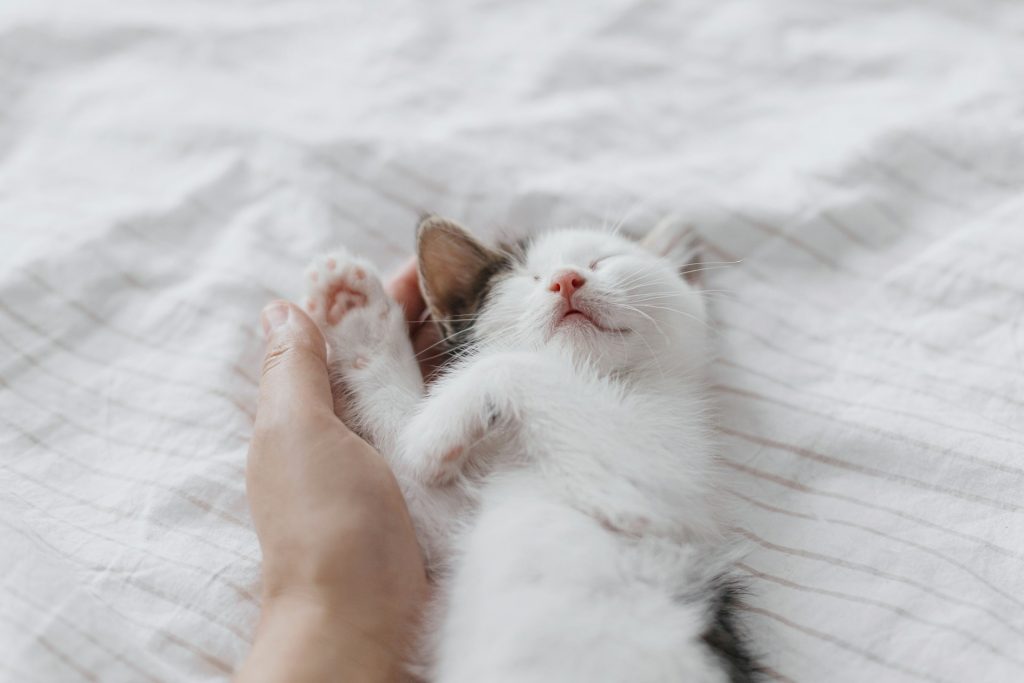
Scent Marking: Claiming Their Human
As part of their instinctive behaviors, cats have scent glands on the bottoms of their paws which play a central role in marking their territory. When your cat kneads on you, they are not only seeking comfort but are also engaging in a subtle act of possession. Through kneading, they leave their unique scent on you, effectively communicating to other felines that you are a part of their domain.
Mark Their Territory Through Touch
When your cat may knead on your lap, they are doing more than seeking affection; they are marking their territory. Cats have scent glands on their paws, and the pressure from kneading helps to release pheromones from these glands. These scent markers are a cat’s way of claiming their space and establishing a comforting scent profile in their environment.
Creating a Familiar and Comforting Scent Profile
By kneading, cats mark their territory, but they’re also crafting a scent profile that brings them comfort. This habitual pressing of their paws against soft surfaces helps to spread their scent, which not only claims their territory but also creates an atmosphere of familiarity and safety, crucial for a cat’s sense of security in their home environment.
The Science Behind the Biscuits
Understanding why cats make biscuits involves delving into their instinctual world. Cat kneading, also referred to as “making biscuits,” is a behavior observed from the time they are kittens, primarily used to stimulate milk flow from their mother. As they mature, this action evolves into a form of communication and comfort, revealing a complex layer of feline psychology. Whether your cat is seeking affection or preparing their resting spot, the act of kneading is a profound element of their natural behavior.
Understanding the Behavior from a Biological Perspective
From a biological standpoint, cat kneading is a behavior that serves multiple purposes throughout a cat’s life. In their early stages, kittens knead to elicit milk from their mother, a vital survival action. As adult cats, the kneading persists, signifying contentment and readiness for rest. Observing this behavior offers insight into the innate needs and comforts that drive feline actions.
The Role of Pheromones in Feline Communication
Pheromones play a crucial role in feline communication, and kneading is one-way cats may release these chemical signals. Through the glands in their paw pads, cats can convey messages about their territory, reproductive status, and emotions, all by the simple act of pressing their paws into various surfaces.
When Kneading Becomes a Concern
While cat kneading is generally a positive sign, it’s important to observe your cat for any changes in this repetitive motion. If kneading becomes excessive or is accompanied by signs of discomfort, it may indicate underlying stress or health issues. Paying attention to these cues is essential for maintaining your cat’s well-being and addressing any concerns that arise.
Recognizing Signs of Stress or Anxiety
Changes in cat kneading behavior can sometimes signal stress or anxiety. If you notice your cat kneading more frequently or intensely, it may be a response to environmental changes or a way to self-soothe. Monitoring your cat’s behavior and providing a stable, comforting environment can help alleviate their stress and promote a sense of security.
Addressing Excessive Kneading
If your cat’s kneading becomes excessive, it’s important to consider the potential causes. Excessive kneading can stem from stress, anxiety, or even medical issues. Observing your cat’s environment and daily routine for any stressors, and consulting with a veterinarian if necessary, can help you address and manage this repetitive motion effectively.
How to Manage Your Cat’s Kneading
Understanding that cat kneading is a natural and instinctive behavior is the first step in managing it. While it’s a sign of affection and comfort, it can sometimes be uncomfortable for pet parents, especially if the cat has sharp claws. There are ways to enjoy this bonding activity without turning it into a painful experience.
Nail Trimming for Safe Snuggling
Regular cat nail trims are essential for safe snuggling during cat kneading sessions. Trimmed nails minimize the risk of scratches, making it a more pleasant experience for both you and your cat. If you’re unsure about the proper way to trim your cat’s nails, consult a veterinarian or a professional groomer to avoid any injury to your pet.
Redirecting With Alternative Comforts
When your cat kneads, it’s showing love and happiness. To manage the intensity, consider redirecting their kneading onto a soft blanket or a plush pillow. This gives them an alternative to kneading without the direct impact on your skin. It’s also important to keep your cat’s nails trimmed to reduce discomfort when they express themselves through kneading.
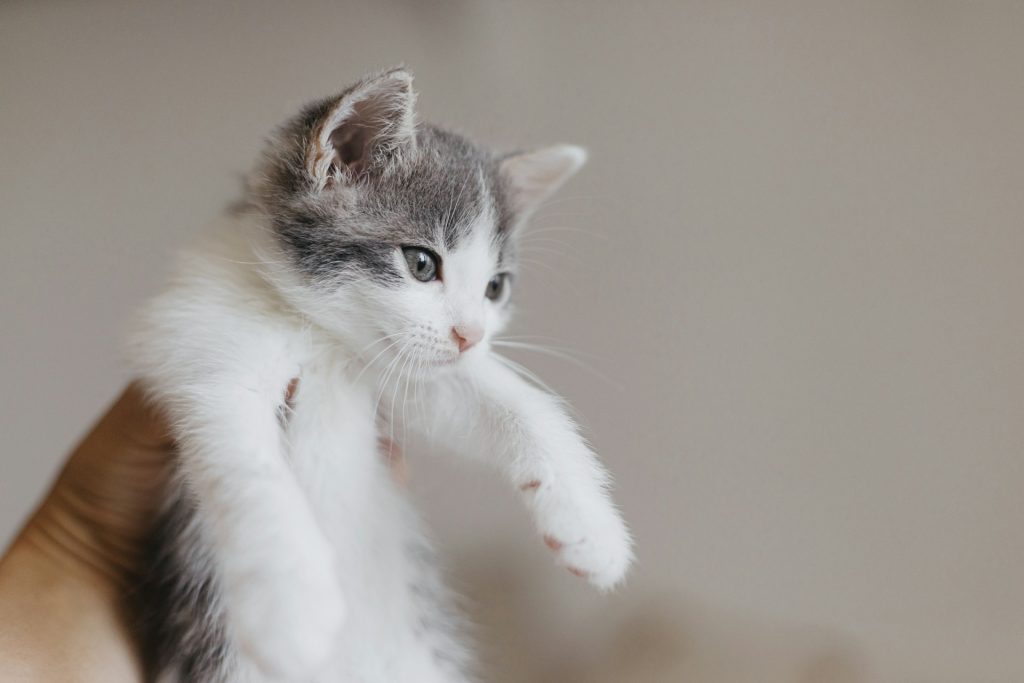
Embrace the Love Behind Each Press
Each press of a cat’s paws during kneading is a display of affection and trust. Recognizing this behavior as a unique way cats show love can help you appreciate the special bond you share. Embracing this behavior is part of understanding your cat’s emotional language and expressing your love in return.
Accepting Kneading as a Form of Feline Flattery
When cats knead, they are engaging in a behavior that can be seen as feline flattery. This instinctual action, reminiscent of the motions they made as kittens to knead their mother’s belly, is a sign of their contentment and trust in you. Accepting this behavior is embracing a natural expression of their affection.
Making the Experience Enjoyable for Both of You
Kneading can be a soothing activity for you and your cat, rooted in their wild ancestors’ behavior of preparing a soft resting place. By providing a designated kneading spot with blankets or pillows, you can enjoy this ancestral ritual comfortably. It’s a lovely way to bond and relax with your feline friend.
Feline Kneading Across the Life Stages
Cat kneading is a behavior that transcends age, remaining consistent from kittenhood to a cat’s senior years. It’s an endearing trait that continues throughout a cat’s life, providing comfort and expressing their innate instincts. Understanding this can deepen the connection between you and your cat at every stage of their life.
From Kittenhood to Senior Years: Kneading Never Ends
From the moment kittens knead their mother’s belly to stimulate milk, to their senior years, kneading is a lifelong habit. This rhythmic motion is a source of comfort and a remnant of their kittenhood. It’s a behavior that maintains its presence, providing a sense of security and affection at any age.
How Kneading Behaviors Evolve as Cats Age
Kneading is a natural behavior that can evolve as cats push and knead for various reasons. As kittens, they stimulate milk production, and as they grow, kneading becomes a way to express contentment or mark territory. It’s important to respect this behavior and provide a comfortable space for your cat to knead.
Responding to Your Cat’s Kneady Behavior
Recognizing when your cat seeks out a blanket or a pillow for kneading can help you respond appropriately. Providing these items can satisfy their need to knead, while protecting your skin from their claws. Observing and responding to their preferences strengthens your bond and ensures mutual comfort.
When to Let Them Knead and When to Set Boundaries
While it’s essential to let cats express their instincts, it’s also important to set boundaries for when and where kneading is acceptable. If your cat extends their claws on a soft surface like your belly or chest, gently redirect them to a blanket or a pillow. This maintains a state of relaxation and prevents discomfort from their sharp claws.
Balancing Your Cat’s Needs With Your Comfort
Balancing your cat’s need to knead with your comfort requires understanding and patience. Establish a routine that includes nail trims for properly trimmed claws, and create designated spaces for your cat’s kneading. This way, you can enjoy the affectionate gesture while ensuring a comfortable experience for both of you.
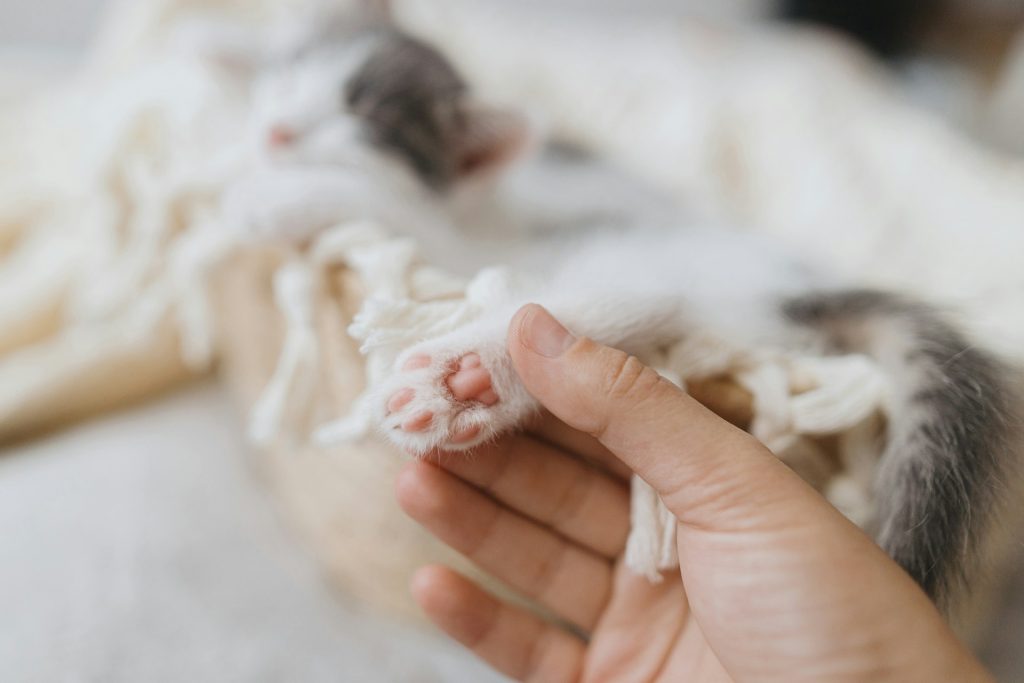
Unraveling the Mystery of Feline Affection
Interpreting the subtle forms of affection displayed by domestic cats can sometimes puzzle even the most experienced cat parents. While the extension of claws during kneading might be misinterpreted as a sign of aggression, it’s an indication that a cat feels safe and content. Observing a female cat as she gently presses her paws into your lap, one can’t help but notice that cats purr while kneading, a soothing sound that reinforces the idea of a peaceful and loving gesture. This rhythmic activity is not just a relic of kittenhood, but a complex expression of trust and comfort in their human companions.

Hi, I’m Zoey, a devoted mom to two charming Siamese cats. My passion lies in assisting fellow pet owners in providing optimal care for their cats. On CatsEuphoria, I share practical tips and relatable stories, inviting you to join me in appreciating the authentic bond between humans and our beloved feline companions.

